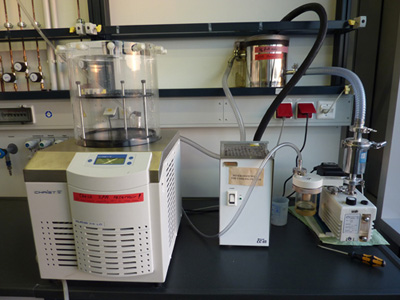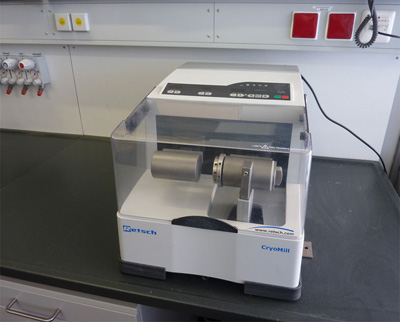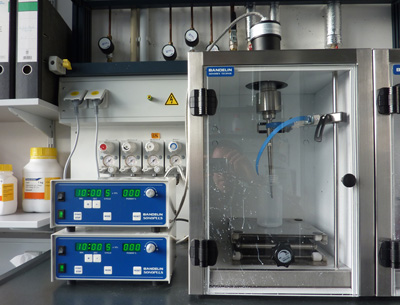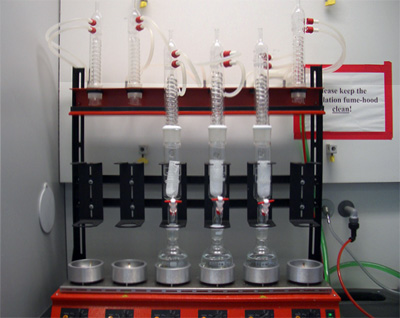Die Inhalte dieser Seite sind leider nicht auf Deutsch verfügbar.
Seitenpfad:
- Organische Geochemie
- Laboratories
- Sample preparation
Hinrichs Lab - Sample preparation
Introduction
Sample preparation and extraction are important steps in Organic Geochemistry before final instrumental analysis. For reproducibility, samples have to be homogenized by freeze-drying followed by grinding; temperature-sensitive samples are crushed and milled under cryogenic conditions using liquid nitrogen. Extraction of organic material involves various solvents and solvent mixtures in order to obtain a total lipid extract that can be, depending on the target compound(s), further separated via column chromatography or directly analyzed by GC or LC techniques.


Freeze dryer
Freeze-drying (also known as lyophilization) is a process during which frozen water sublimates directly from the solid phase to the gas phase. In our lab, this process is applied to frozen wet sediments and cell material before extraction.


CryoMill
Cryogenic grinding consists of cooling sedimentary material followed by milling, leading to small particle sizes. We apply this technique to sediments that are otherwise difficult to grind at room temperature or to temperature sensitive samples using liquid nitrogen.


Ultrasonic homogenizers
Two ultrasonic homogenizers have been recently introduced in our lab as an extraction methodology alternative to microwave extraction and sonication in a water bath. The ultrasonic homogenizers have a higher energy and produce higher extraction yields of our target compounds.


Soxhlet extraction
Soxhlet extraction consists in placing a solid sample inside a thimble, which is continuously extracted by refluxing an appropriate solvent. This cycle can be repeated over hours or days. Our lab has an apparatus with six parallel Soxhlet extractors, which are used to extract water-soluble DOM from sediment samples.


